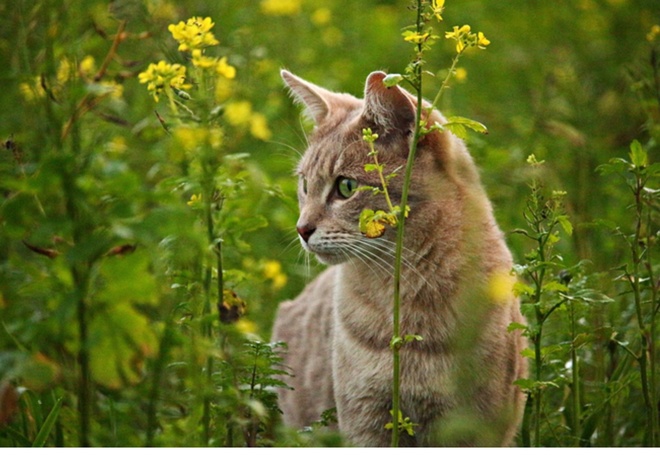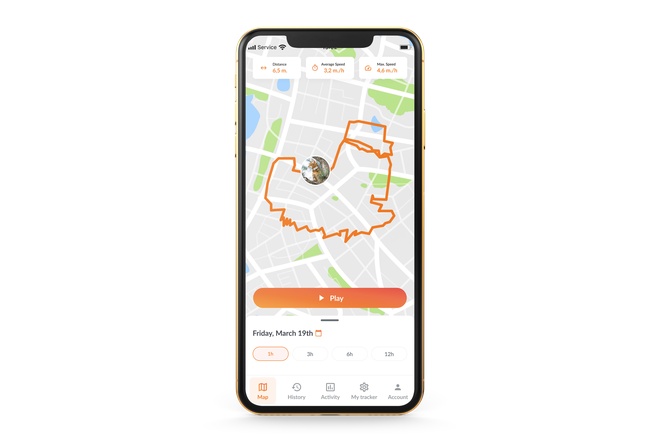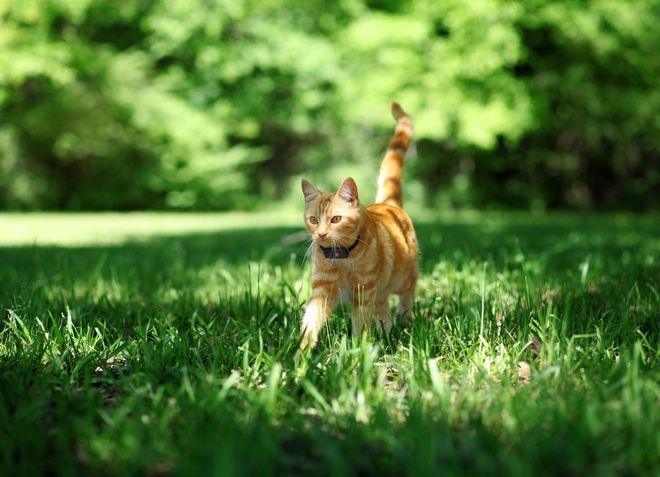Weenect has conducted an in-depth survey to uncover everything about the territorial behaviors of domestic cats. By combining GPS tracking data* and responses to a detailed survey**, this study reveals valuable insights into the distances covered, activity times, and favorite destinations of cats. The survey also aims to understand the relationships cats have with their immediate environment and their owners (see the survey).
*GPS data: kilometers traveled and activity time are taken from the GPS trackers of 100 cats equipped with Weenect devices.
**Client Survey: A survey conducted with 483 French and German Weenect customers providing detailed information about their cats' outdoor behaviors, types of residence, and preferred destinations.

Reading time : 2 min
For this survey, Weenect's activity tracking module was crucial in collecting precise data on the kilometers covered and the activity times of the cats.
On average, a cat covers 2 kilometers per day. However, this average hides a significant variability: some cats only travel a few hundred meters, while others explore up to 7 kilometers daily. On a weekly average, cats cover 20.23 kilometers and 56.50 kilometers per month.
Cats spend an average of 27.54% of their time being active and 72.46% resting. However, the level of activity is not always correlated with the distance covered. Some cats can be very active without traveling much, while others cover great distances with minimal activity.
Although the majority of cats have the opportunity to go out, 72.03% only go out during the day, and 27.14% both day and night. Only 0.84% go out exclusively at night. Additionally, 44.05% of owners use the ringing feature of the Weenect tracker to call their cats back home.
Most cats live in a house with a garden (91.76%), and while this doesn't seem to directly influence their outdoor behavior, those who don't stray more than 100 meters spend an average of 9.05 hours outside compared to 12.11 hours for those who travel farther.
Nearly 83.89% of cats regularly visit the same places, with 60.20% going to neighbors' homes, 10.20% to woods and forests, and 8.16% to fields and meadows. This reveals a certain routine and the possible existence of parallel lives.
The Weenect survey demonstrates that there are no strict rules linking the environment to cat behavior. The results confirm their reputation as independent animals with unique habits and a high degree of autonomy. Cats freely choose their territories, whether near or far, and can lead a double life between their home and other familiar places.
These feline adventures can be a source of stress for owners, which is why Weenect has developed an anti-strangulation collar designed for the safety and comfort of cats. With this collar, owners can be assured that their companion is protected against the risk of strangulation when they go on adventures.
Click on the buttons below to save this press release in PDF format or return to the Pressroom.

